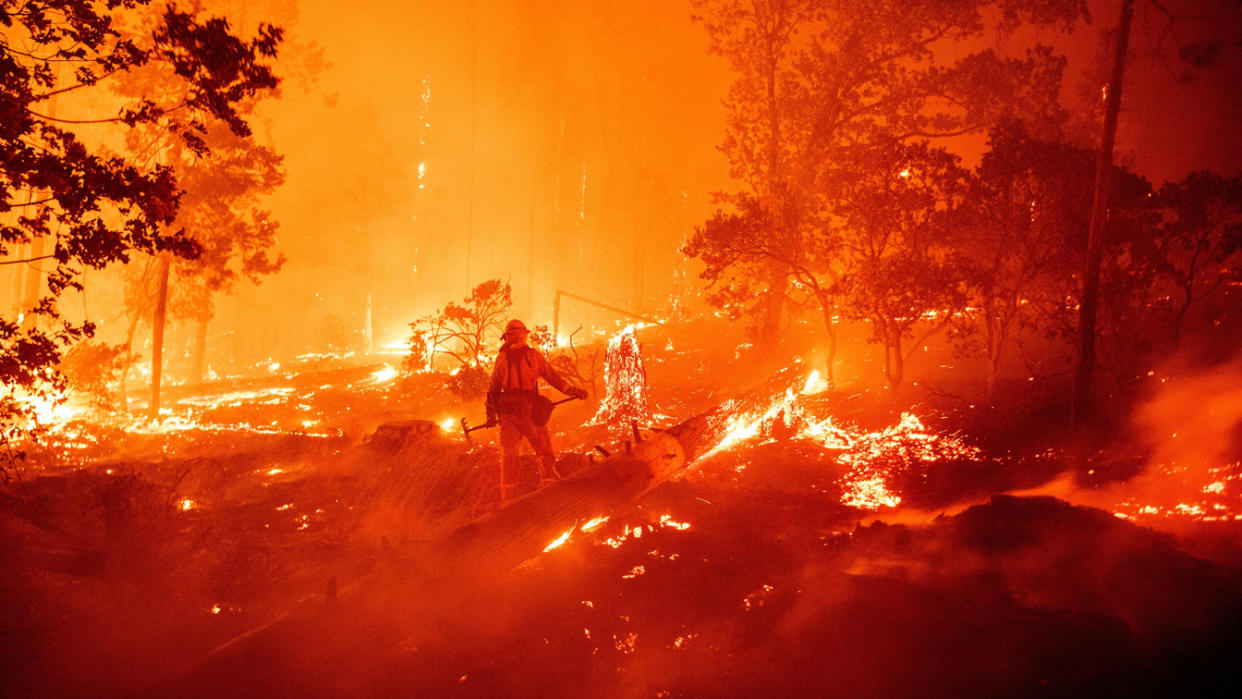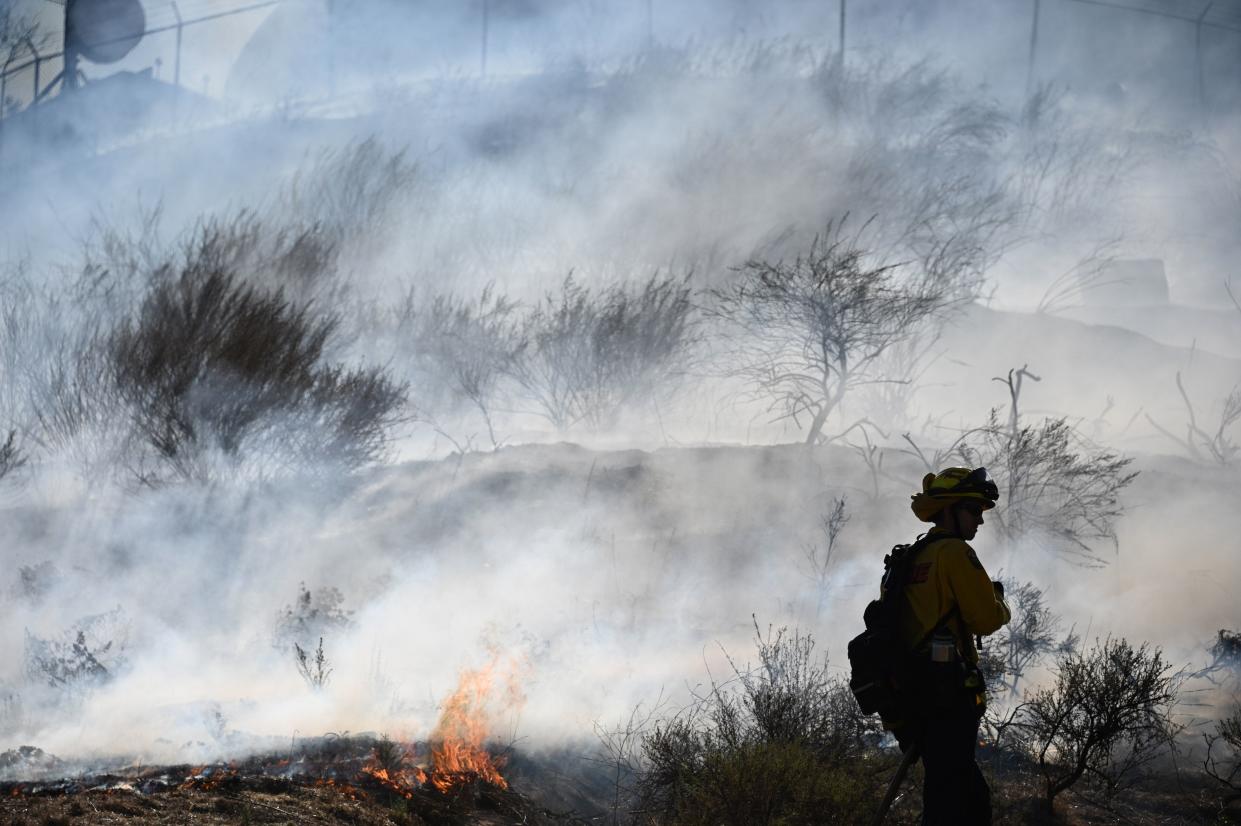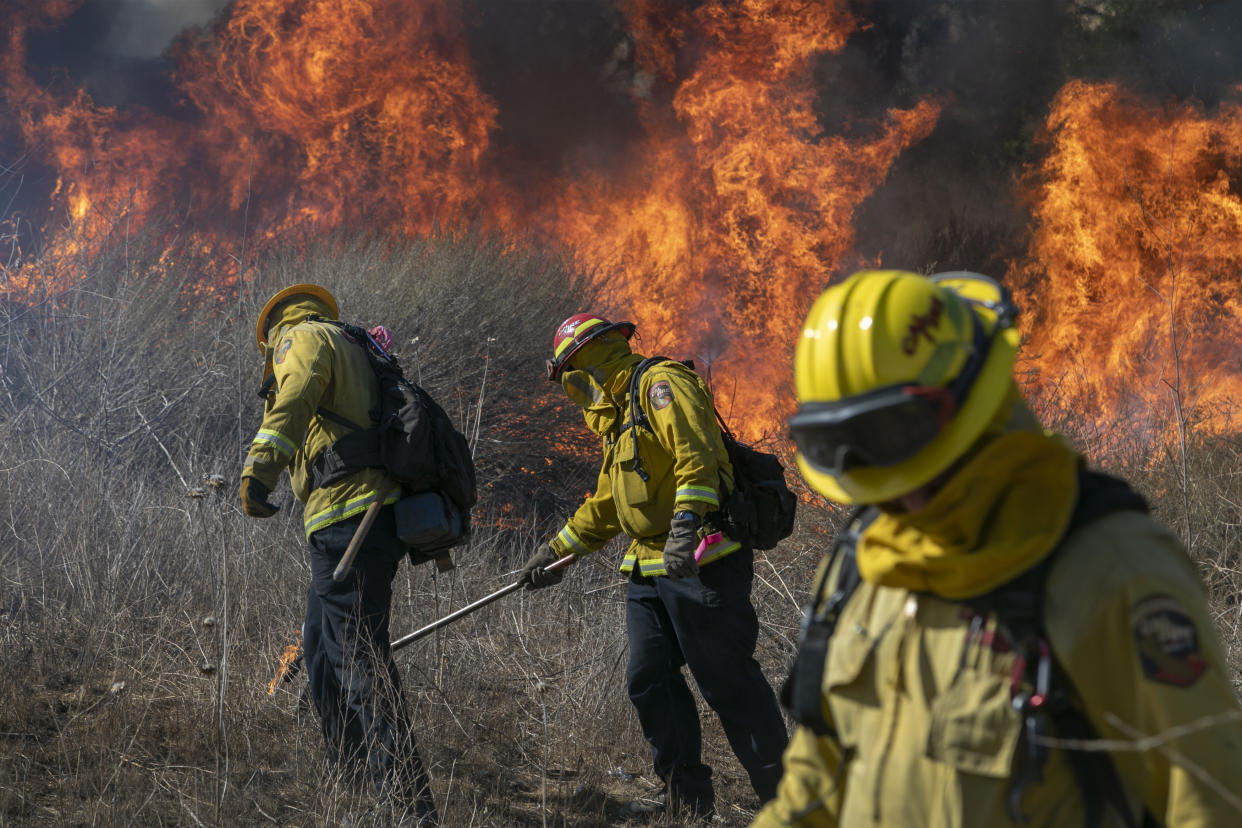2020 wildfire season in California wiped away 16 years of climate gains
The wildfires that have scorched the West in recent years are not just a consequence of climate change, they also are an increasingly sizable driver of the problem, according to a new study.
The research paper, published Monday in the journal Environmental Pollution, finds that California’s wildfires in 2020 caused twice the amount of greenhouse gas emissions that the state successfully cut between 2003 and 2019. In other words, 2020’s wildfire season, which set a record for the number of acres burned in the state, essentially wiped out 16 years of progress California had made on climate change through efforts such as replacing fossil fuels with clean energy.

Since wood is full of stored carbon dioxide — the most prevalent greenhouse gas — it is emitted when the wood burns. As average temperatures have grown warmer, California and other Western states have experienced more heat waves and droughts, which are risk factors for wildfires. Currently, a 22-year megadrought is parching the West, forcing water authorities in parts of California to institute water usage limits for residents. The state is also experiencing intensified heat waves.
Consequently, wildfires have become more prevalent. Eighteen of the 20 largest wildfires in California’s history have occurred since 2000. The eight largest have all been since 2017, five of them in 2020 alone. The biggest fire in state history, the August Complex Fire in 2020, burned more than 1 million acres of land.
In total, more than 9,000 wildfires devastated the Golden State in 2020, sending smoke all the way to the East Coast. More than 4.3 million acres burned, 30 people died and economic losses topped $19 billion.

Now, we also know how much emissions were created by all that burning wood, and they accounted for 30% of California’s total emissions, making wildfires the second-largest source of emissions in the state, after transportation.
“To the great credit of California’s policy-makers and residents, from 2003 to 2019, California’s GHG emissions declined by 65 million metric tons of pollutants, a 13 percent drop that was largely driven by reductions from the electric power generation sector,” Michael Jerrett, professor of environmental health sciences at UCLA and an author of the study, said in a statement accompanying the report. “Essentially, the positive impact of all that hard work over almost two decades is at risk of being swept aside by the smoke produced in a single year of record-breaking wildfires.”
Carbon emissions are not the only kind of pollution that wildfires create. The smoke and particulate pollution clog the air, and they can make breathing difficult and harmful to human health.
In June, an analysis in the annual Air Quality Life Index found wildfire smoke was so bad in 2020 that it temporarily reversed the gains in air quality from decades of federal and state regulation in California. The entire state was exposed to dangerously high levels of particulate matter, and nationally, 29 of the 30 counties rated as having the worst particulate pollution that year were found in California. Half the counties in the state had the worst air pollution recorded since satellite measurements began in 1998.

Donelda Moberg, who suffers from emphysema and lives in California’s San Joaquin Valley, told the Los Angeles Times earlier this year that she avoided going outside as much as possible for weeks on end in 2020 because of the wildfire smoke.
“The sky was a clay color, and it made the sun a funny color — it didn’t look normal,” Moberg told the newspaper. “You could always tell whether it was safe to go out or not by just looking at the way the sun shined.”
Researchers from Stanford University estimated that the 2020 wildfires led to 1,200 to 3,000 premature deaths among Americans 65 and older.

